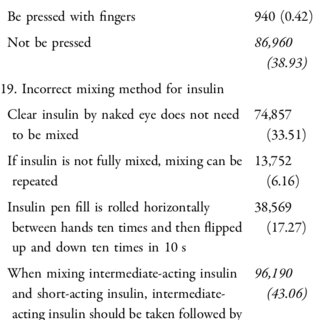August 2023
·
29 Reads
Medicine
To assess the association between insulin regimens and health-related quality of life (HRQoL) after the introduction of basal insulin (BI) among people with type 2 diabetes in real-world clinical settings. 16,339 registered people with diabetes who had inadequate glycaemic control by oral agents initiated BI (either single BI or Basal-bolus) and completed a 6-month follow-up from 209 hospitals were included in the analyses. At the end of the follow-up, the switches of insulin regimens, change of HRQoL (EQ-5D-3L) and their associations were assessed. Initial insulin regimens of single BI and of basal-bolus (BI included Glargine, Detemir, and Neutral Protamine Hagedorn) accounted for 75.6% and 24.4%, respectively. At 6 months, regimens used were BI alone (65.2%), basal-bolus (10.4%), and premixed (6.4%), whereas 17.9% stopped all insulin therapy. The visual analogue scale score increased by 5.46 ( P < .001), and the index value increased slightly by 0.02 ( P < .001). Univariate analysis showed that people with diabetes taking basal-bolus regimen had the greatest improvement on HRQoL in all dimensions, especially in the reduction of the percentage of Pain/Discomfort (by 10.03%) and Anxiety/Depression (by 11.21%). In multivariable analysis, single BI or premixed insulin at 6 months was associated with more improvement of visual analogue scale score compared with stopping all insulin. Improved HRQoL was observed after initiating BI in people with type 2 diabetes . If the same achievement on HbA1c control can be guaranteed, single BI is preferred to other regimens from the viewpoint of HRQoL. Basal-bolus has the most significant potential to increase HRQoL, however, the people with diabetes characteristics differ from those initiating BI alone. Further longitudinal cohort study with a longer study period might be necessary to evaluate the certain effect.




















